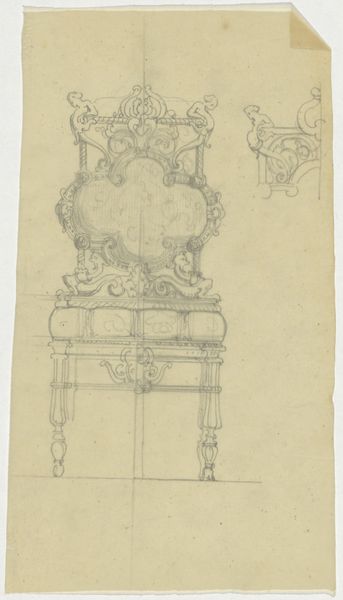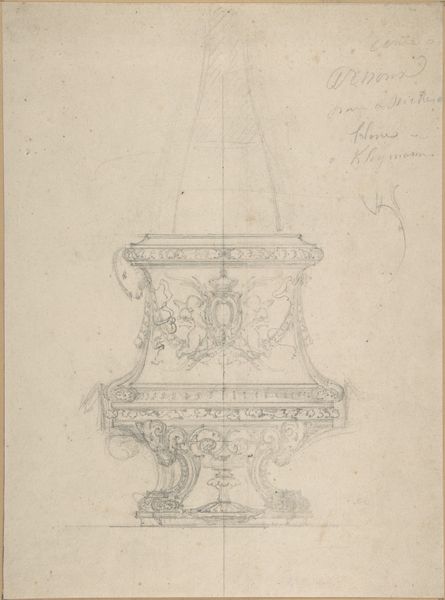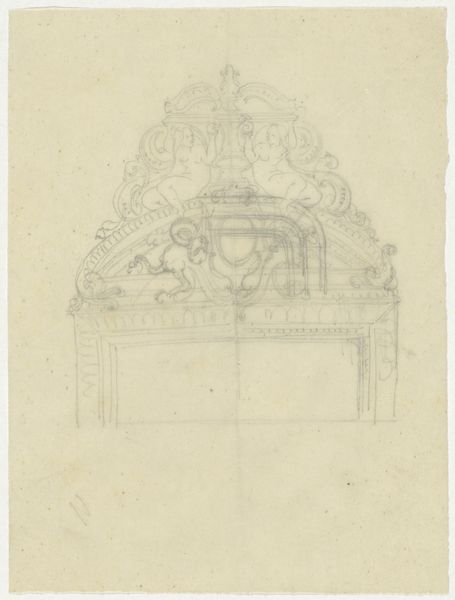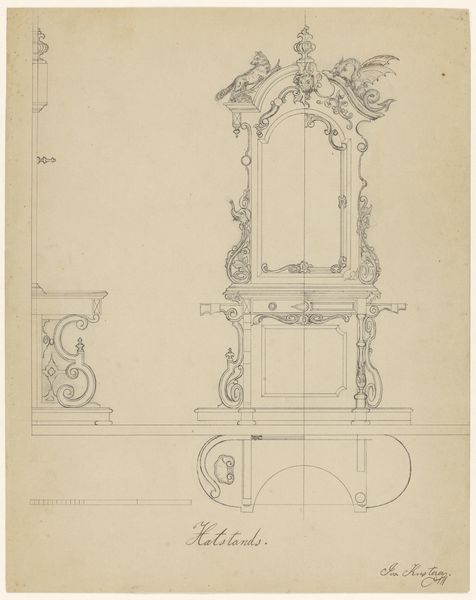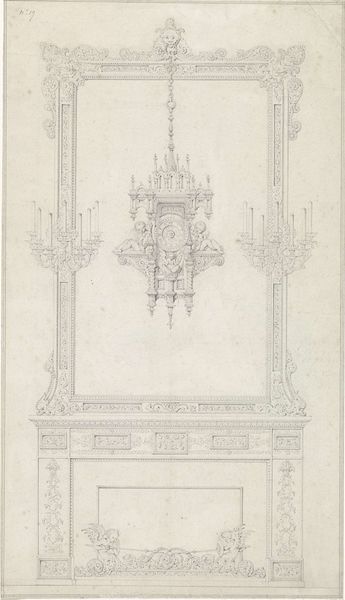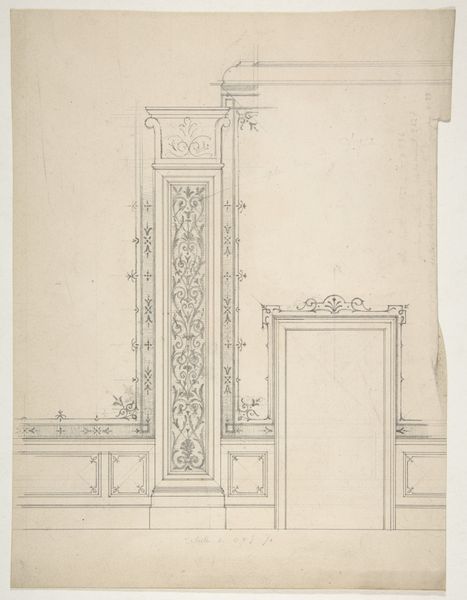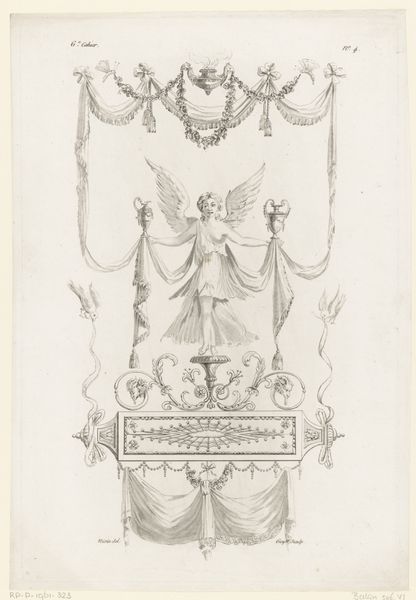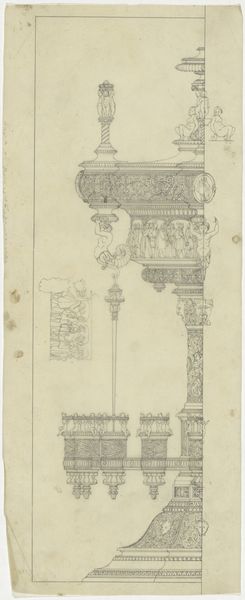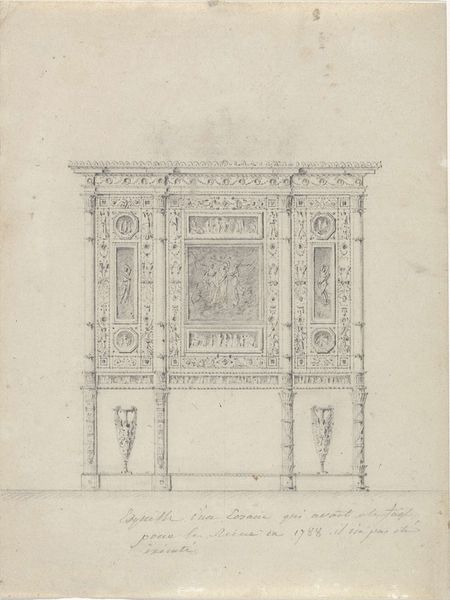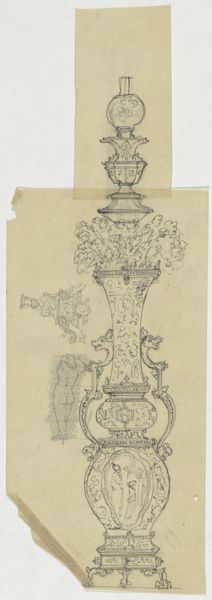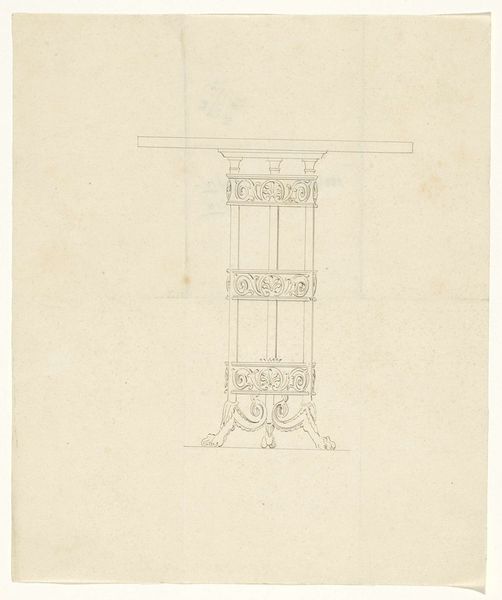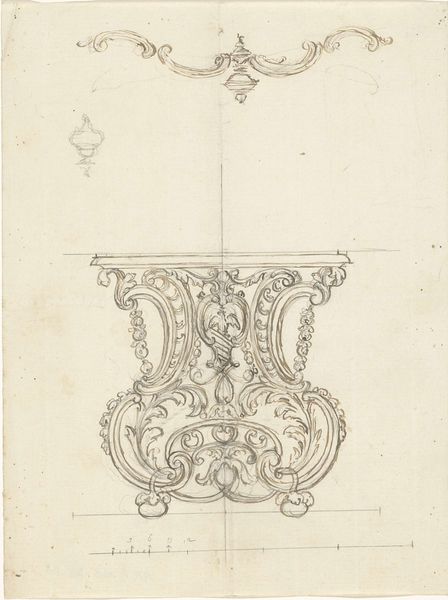
drawing, paper, pencil, architecture
#
drawing
#
classical-realism
#
etching
#
paper
#
geometric
#
pencil
#
academic-art
#
architecture
Dimensions: height 131 mm, width 204 mm
Copyright: Rijks Museum: Open Domain
Curator: Ah, this sketch possesses a delicate beauty. We are looking at a drawing, probably pencil on paper, of a 'Tafelstuk', which translates to 'centerpiece', dating back to around 1830-1850. It's attributed to the workshop of Firma Feuchère. Editor: It certainly does have a ghostlike presence, doesn't it? Ethereal, like a half-remembered dream of ornamentation. Look at all that detail rendered in such fine lines. One could almost mistake the candelabras for architectural miniatures themselves. Curator: Precisely. There is so much detail, especially within the geometric form of what looks like a pavilion topping the table. And, yes, that's exactly it—each component is drawn as if it were architecture. This drawing belongs to a style of classical realism. You feel the artist meticulously tracing every curve, and flourish with an almost reverential care, yet...it never quite escapes its provisional nature as a proposal. Editor: And isn't it interesting how it anticipates its potential construction, all while showcasing design through artisanal expertise? Notice how even the sketched lines carry the promise of craft production, imagining future makers translating paper into material reality. Curator: Indeed! It blurs the lines between design, utility and craft. I am imagining this grandeur centerpiece realized in polished silver, the light playing across every intricately etched surface… How would it feel to use or display this object? Editor: Think of the workshops— the hierarchy of skill, from apprentice to master craftsman each adding their labour. It brings you back to understanding the cost— both material and social— of luxury in that time. Curator: That is something the piece made me feel! Almost guilty for wanting that thing. The material conditions hidden inside such artifact. Editor: Exactly! In its time, such luxury would speak volumes of social stratification. Though its design seems frozen, its material implication unfolds and becomes fluid. Curator: Absolutely. It prompts contemplation on creation itself and those countless unnamed hands that bring artistic vision into tangible form. It makes one pause to think about more than its aesthetics. Editor: So here is that half-dream made of production and not only inspiration! What a nice contrast.
Comments
No comments
Be the first to comment and join the conversation on the ultimate creative platform.
